Brighten up your spring garden with these flowering annuals and perennials.
Kickstart your spring garden with these planting suggestions that will instantly add cheery color to your containers and flower beds. Head to your local garden center and fill your cart with these pretty annual and perennial plants. They’ll pair well with other early-blooming flowers you may already have in your yard, including crocus, daffodils, and tulips. Then, as more ephemeral flowers fade, these 7 spring-blooming plants will keep the show going until summer arrives.
Adding plants with spring blooms is “a great way to brighten up your yard, garden, porch, or patio after the long gray days of winter,” says Diane Blazek, executive director of the National Garden Bureau. “And because they are cold tolerant, late-season chills or even snows won’t deter them from blooming.”

1. Pansies and Violas
The happy faces and colors of violas and pansies are hard to resist. Pansies are the larger, show-off versions of their small, dainty-looking viola cousins. Even though they look delicate, they both can take a cold snap or two in stride and are easy to grow during the cooler seasons. The flowers come in a range of vivid to pastel colors and are often the first sign of spring at garden centers.
Put pansy plants in the ground when nightly temperatures no longer fall below 40°F and daytime temps are fairly steady at 60°F—or when the soil temperature is above 45°. Although pansies are classified as biennials or perennials, they’re often grown as annuals. If protected during winter, they may make a return visit the following spring. Pansies and violas do well planted directly in the ground for cheery splashes of color in garden beds, but also thrive in porch pots and window boxes.
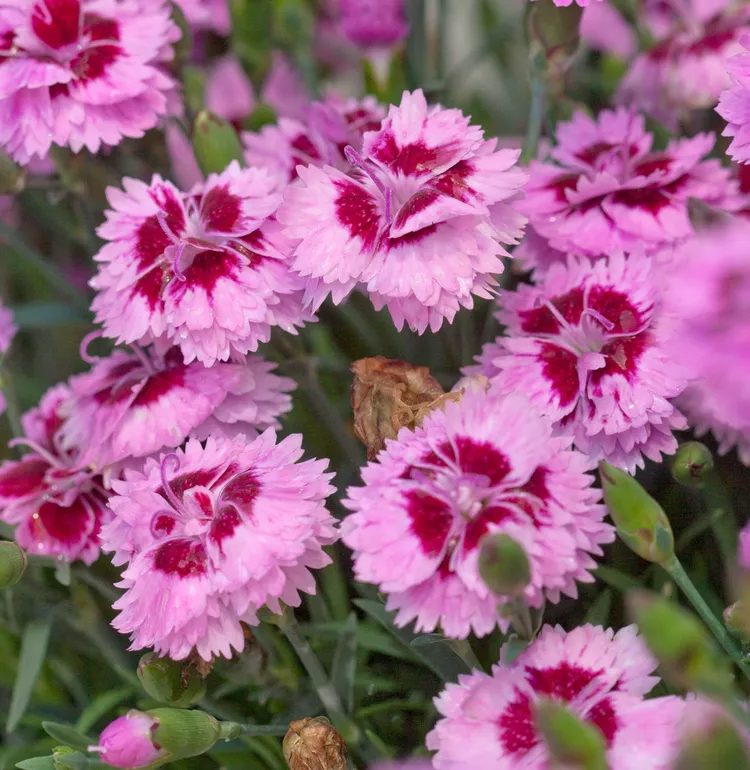
2. Dianthus
Like pansies, dianthus flourishes in cooler weather. That means spring is an ideal time to get these plants in the ground. Make sure outside temperatures are at least a steady 40°F before planting. The flowers are typically fragrant, with a hint of cloves in their scent. Dianthus colors are typically in shades of pink, from dark reddish-pink to fuchsia, to lighter, delicate hues.
“There are several types of dianthus to enjoy,” Blazek says. “Dianthus barbatus and chinensis are perennials that come back every year, giving you long-lasting color. If you see Dianthus hybrida or hybrid, check the tag to see if it’s an annual or perennial for your area. Also read the tags for the mature height. If you want a bedding plant, choose one that is shorter, but for a cutting garden, choose the taller carnation types.”
Be sure to plant dianthus plants where they’ll get at least 6 hours of sunshine a day. Deadhead the perennial variety and you’ll be rewarded by blossoms from spring through summer. If you’re growing the biennial version, leave dying blossoms on the plant at the end of the season so they can reseed themselves for the next year.
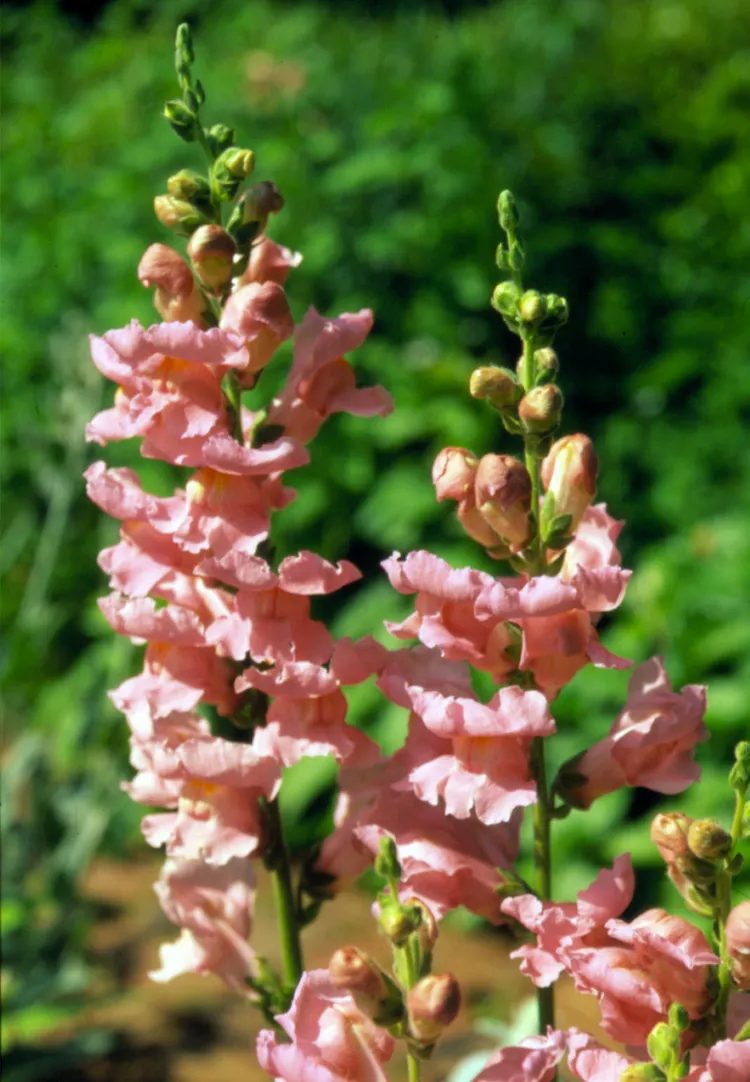
3. Snapdragon
No need to wait until after the last frost to put snapdragon plants in the ground. You can tuck these annual beauties into the ground a few weeks before your area’s last frost as long as the soil is workable and not frozen hard. Mainstays of cottage gardens, snapdragons come in nearly all the colors and hues of the rainbow. When they are three to four inches tall, pinch the stems back to two sets of leaves and the plant will branch more profusely.
While snapdragons are among the earliest bloomers in spring, they don’t handle heat well. In cooler climates, they may blossom from spring through fall. But in areas with hot summers, snapdragons will stop blooming. Plant them in part shade to keep them happy as long as possible. Removing the spent flowers will encourage reblooming.
Although there are so many new snapdragons in garden centers, there’s one that’s a standout, Blazek says. “DoubleShot Orange bicolor is an All-America Selections National Winner, so we know all the judges across North America had great success with it,” she says. “It out-performed some of the other varieties on the market. It’s a great medium-height snap with very strong stems that withstand spring winds. And the unique double flowers of this variety have subtle color variations to enjoy throughout the life of each bloom.”
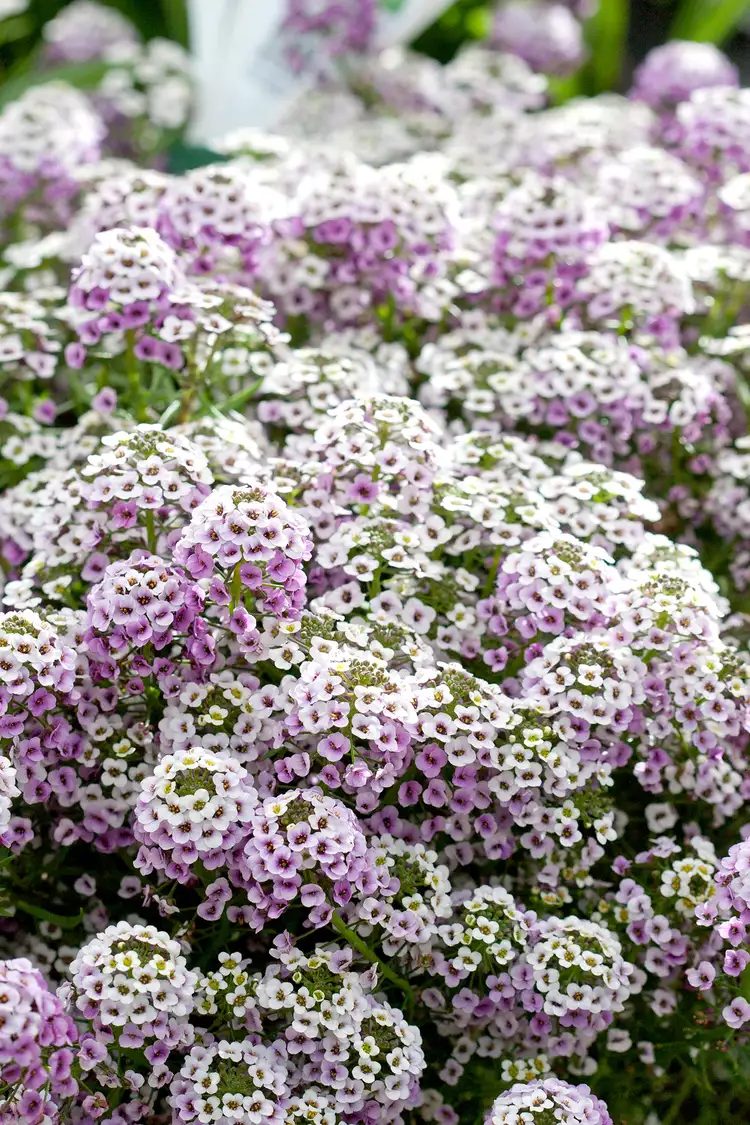
4. Sweet Alyssum
This is one of the few early-flowering annual plants that can be started from seed sown directly outdoors a few weeks before your last frost date. Or you can wait a bit and find flats of alyssum you can easily transfer to your garden while the weather is still chilly. They tolerate temps just below freezing, but prefer it when the air is 45-60°F. Check for heat tolerant varieties at your garden center—a few types of alyssum will keep blooming in warmer weather.
According to Blazek, alyssum often does double duty as both a spring and fall bloomer. “In the spring, it gives you those early colors you crave,” she says. “Then it goes into semi-dormancy, taking a well-deserved summer nap before reblooming in the fall.”
Sweet-scented alyssum prefers full sun, although light shade will do. It grows quickly into a sea of tiny blossoms, typically white, but also pink, violet, peach, and red. The plants work well for edging beds, tucked between rocks, or in containers and window boxes. Pollinators and other good garden bugs are drawn to alyssum.

5. Creeping Phlox
Like alyssum, creeping phlox (Phlox subulata) is a low-growing plant that doesn’t get taller than 6 inches but spreads into a stunning blanket of colorful blooms in spring. However, creeping phlox is a perennial so you can look forward to it coming back year after year. It’s especially stunning when planted in a mass (choices are pink, purple, blue, and white). Creeping phlox does best if planted after the last frost in your area, but is quick to provide late-spring blooms when grown in full sun.
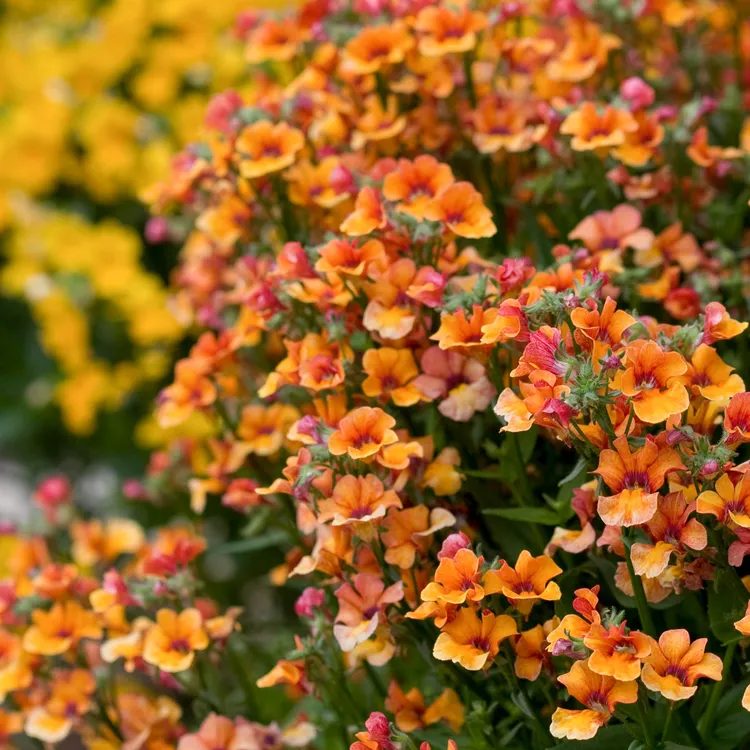
6. Nemesia
Fabulous in containers and hanging baskets, nemesia plants are prolific bloomers that provide months of color. The blossoms look somewhat like tiny snapdragons or mini orchids with a sunshine yellow eye in the center. New colors are vivid, including reddish-plum and hues of bright orange-yellow-reds.
These annuals are pretty much fuss-free because they don’t require deadheading. However, during the heat of summer, the plants may get scraggly. Simply shear off the spent flowers and they’ll bounce back when the weather cools for more color in the fall. Nemesia can be planted directly in the ground, but must be in very well-drained soil in a sunny spot, preferably with afternoon shade.
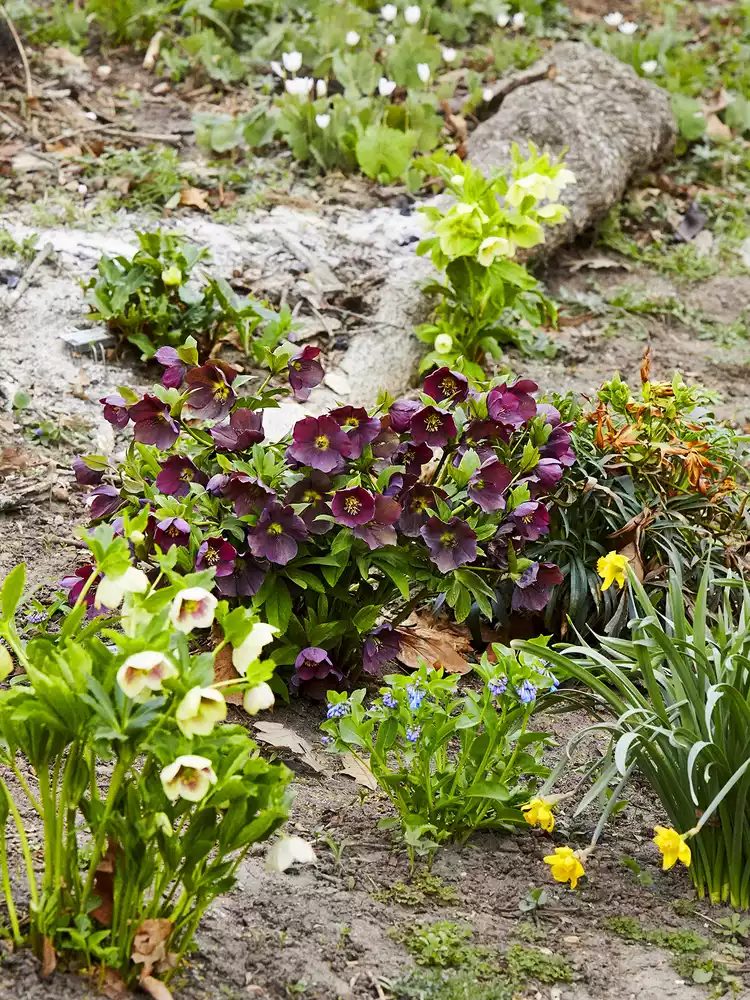
7. Hellebore
There are so many new hellebore hybrids, you’re bound to find one—or two or three—varieties you can’t live without. Although known for their downward-facing blossoms, several of the newer varieties hold their flowers up in statement colors (metallic blue, deep purple, and even black). Plus they offer bigger and double blooms, and unique confetti-speckled patterns. Commonly called the Lenten rose, this perennial is often the first to appear in early spring, sometimes as early as February and may bloom for months.
Another hellebore bonus: they thrive in the shade or part shade. It’s best to buy hellebores as full-sized plants and get them in the ground when it’s no longer frozen.


